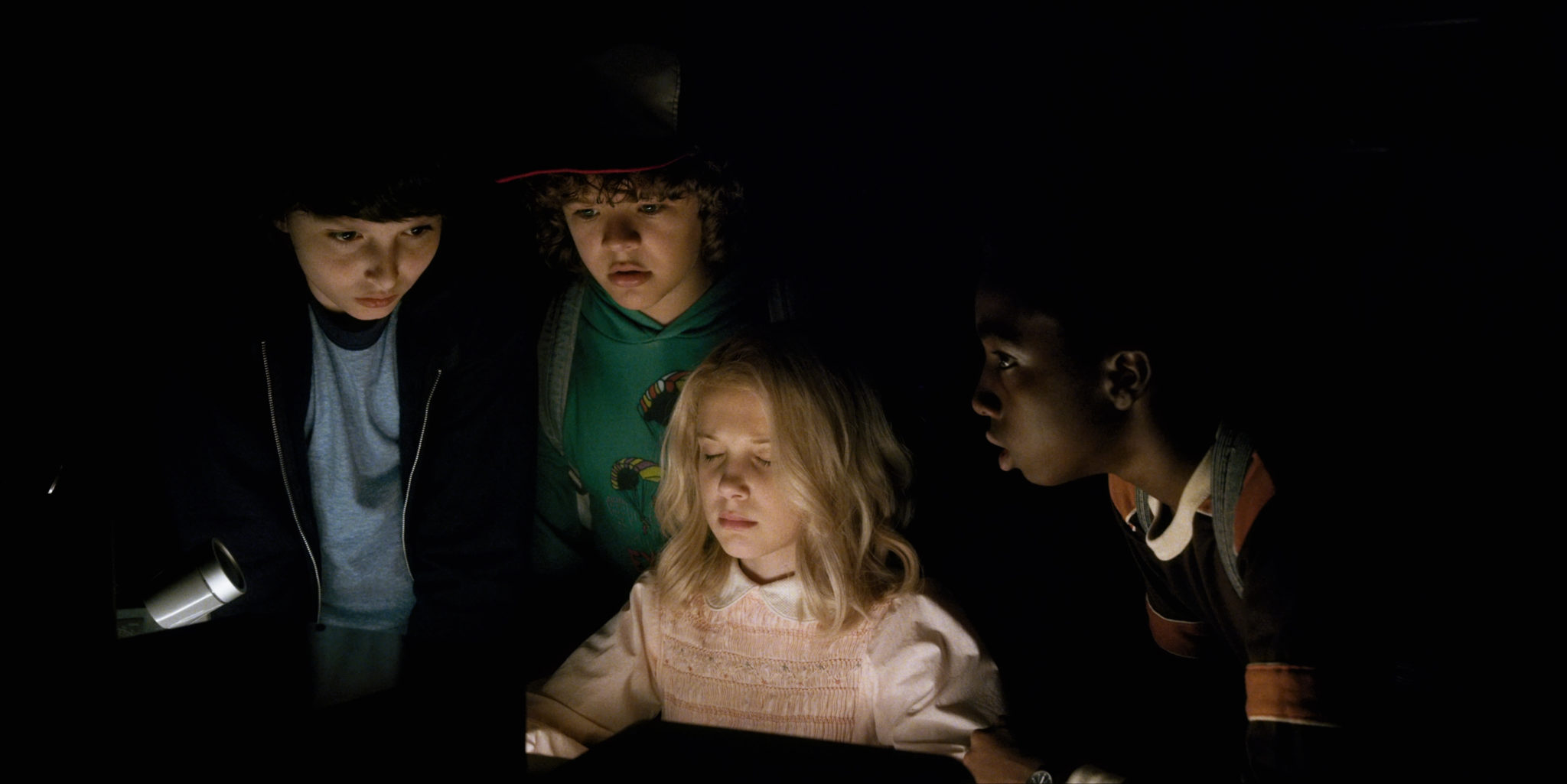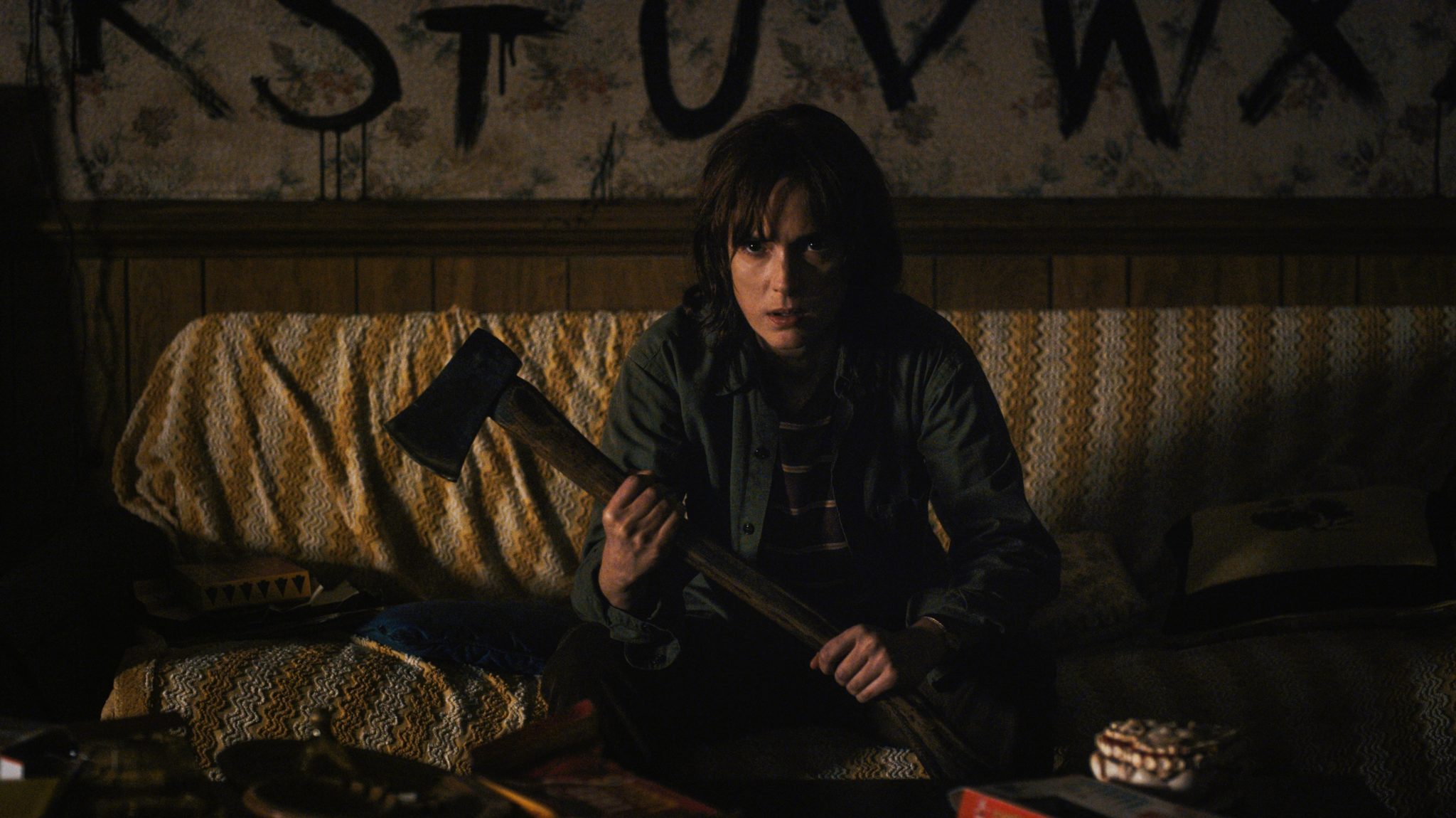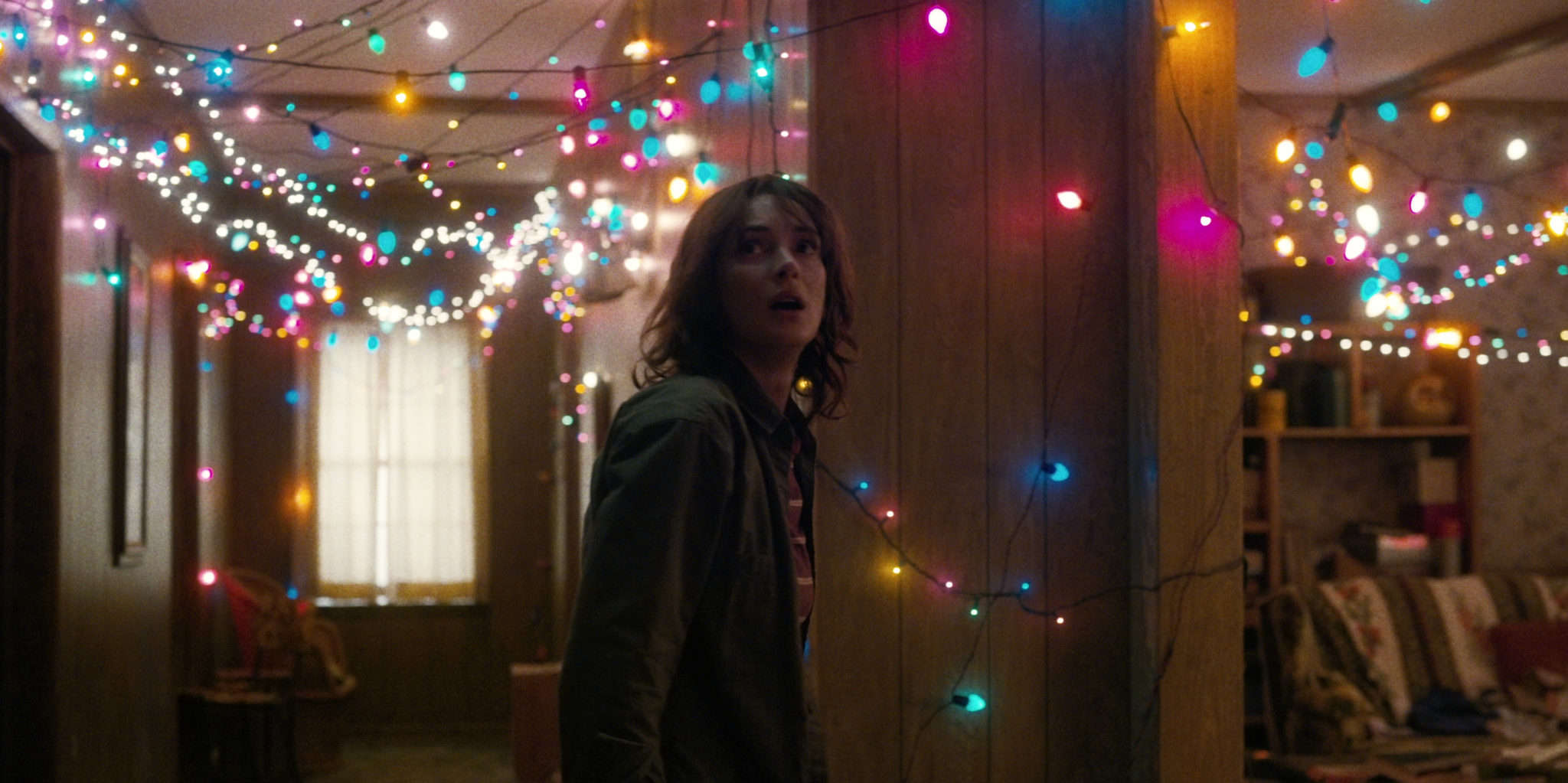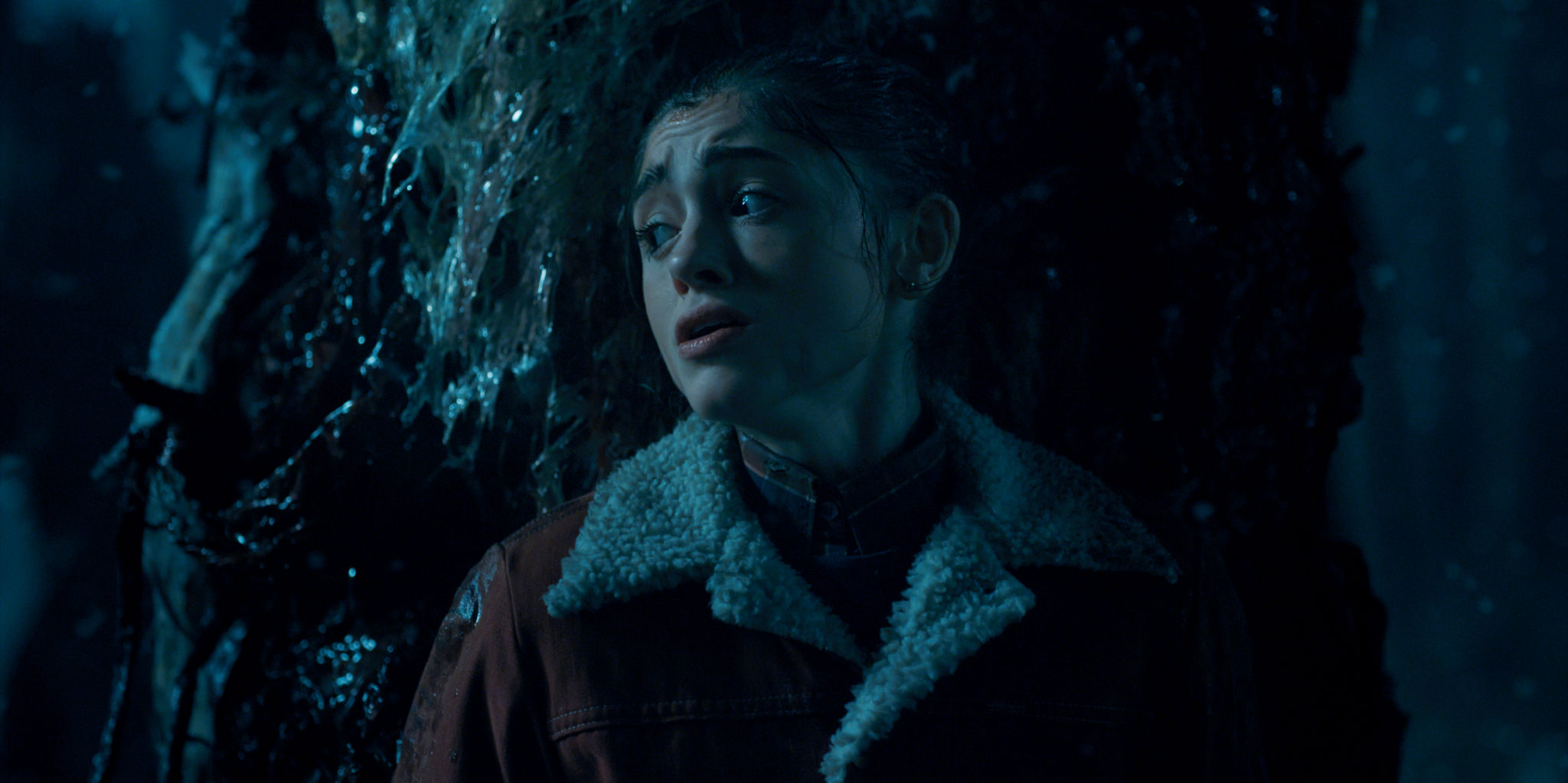Inside the Upside Down, Spatially Creative Cutting That Made Season 1 a Surprise Smash
Stranger Things, Matt and Ross Duffer’s intoxicating homage to supernatural thrillers from the 1980s, is a master class in pop-culture synthesis. Blending otherworldly elements from the best of Stephen King and Steven Spielberg’s kid-centric adventures with a creeping sense of R-rated bloodthirstiness straight out of The Thing and The Shining, the retro Netflix series feels at once surprisingly familiar and fresh. Techniques and tropes from ’80s classics merge seamlessly with a vocabulary all its own.
With fans already chumming the Web about what to expect from Season 2 (dropping, appropriately, on Halloween), we asked editors Dean Zimmerman and Kevin Ross how they worked with the Duffer Brothers and producer of post Rand Geiger to build each scene in the eight-episode first season, particularly the show’s signature transitions.
StudioDaily: Filming recently wrapped for Season 2. Where are you in post right now?
Dean Zimmerman: Kevin is doing Season 2 but alas, I’m on a feature right now, so the schedules didn’t work, and I’m not able to cut Season 2. My assistant, Nat Fuller, is taking over the reigns for me.
Kevin Ross: To answer your question, we’ve still got a ways to go in post. You know I can’t tell you anything, but what I can say is that the new season is going to be even bigger, and darker and scarier. It’s going to be great; it’s such a terrific story.
How many of the fabulous spatial cuts that send the viewer from one world to the next were scripted by the Duffer Brothers and how much was discovered through your play and experimentation?
KR: A lot of it was play on our part, but it was mapped out by the dailies the brothers gave us. For example, we knew that we had this really tight closeup of Eleven when we go into the void, then we pull back into this nice wide black space. Since the Duffers were so busy shooting for so many days it was basically up to Dean and myself to come up with the cutting pattern on our own, which let them have more to tinker around with once they got to post.
DZ: As far as being unhand cuffed and able to be free and play, and get dirty, in the sandbox, they were right in there with us, literally saying, “Let’s make a mess and get into all kinds of trouble and just see where it falls out.” The best things happen when you do that. But that’s also the most fun. Cutting that series was so easy because it was effortless. All we did was go in and have fun every day. It wasn’t stressful — the way Netflix operates, the way our team was set up, it really didn’t feel like work. I really believe that’s a big reason it yielded the most incredible product. Having that kind of relaxed atmosphere let us be as creative as we possibly could. They trusted our unique talents and they let us use them.
Did you collaborate on single episodes or alternate by episode?
DZ: Mostly alternate episodes: I did episodes 1, 4, 6 and 8 and Kev did 2, 3, 5 and 7. Weirdly, it all worked out that the episodes kind of flowed from one to the other seamlessly, which isn’t always the case when you have two different editors cutting. You have two different people, with two different styles and two completely different backgrounds — I come from features and Kevin comes from TV and assisting features — and we made them work in complete harmony over an eight-episode series. We take a lot of pride in that. For me, that’s what makes our combined edit stand out.
Did Netflix’s full season release schedule make that possible?
DZ: For sure, but this merging of two parallel but different worlds of TV and film in Kevin and myself also worked to our advantage. We sat down early on with our post producer Rand Geiger, who is a good friend and was my PA on features for a long time before becoming an assistant to Shawn Levy, the show’s executive producer, and really talked it through. Kev really had a very clear idea how TV editing worked and I had a very clear idea how feature editing worked. But since Netflix is new to the game, they let us find a new path. We were kind of driving how we were going to make this work. I think we took the best of both worlds and came up with a plan that would be the ideal scenario for both, and we merged them.
That’s a nice symmetry with the alternating and slow merge of the two worlds in the story.
KR: It worked on so many levels. What I found working in this new Netflix mode was we mixed all the episodes at the end, in 28 straight days, so it was like a feature in that way. We weren’t rushed by the stress of having to lock episodes for air. We locked them all at the end, once we saw the whole. Of course, we did have to have all of the visual effects sequences done much earlier so we could turn those over, but other than that, it was so much more relaxed than a typical series. The schedule allowed us to make changes and experiment without having that deadline hanging over our heads, like we have to turn over and lock the cut this week. It was all done way in advance. That was a huge benefit for me, coming from television. The Duffers also cross boarded every two episodes, so they would do a shooting schedule for 21 days over those two. So as Dean and I got dailies, some days he would have more of the dailies or some days I would, or some days it was split down the middle. But then we had much more time to work on our material after that, unlike a feature, where he’d be working along during the 60-day shoot. The mentality of television is an eight-day shoot, then turn a cut over in four days.
DZ: The greatest part about that was being able to do all the mixing and finish work at the end. It allowed us to revisit episodes that had been signed off on already. And we could say, hey, if we only got this little pick-up or this little scene, we could make it even better. And they could get those into the last days of shooting for us. These were surgical strikes but, in most cases, they just blew this eight-hour movie to a whole other level.
KR: When I came on board, I thought it was going to be an eight-hour limited miniseries. Once we began, and Netflix renewed it, it morphed into a normal TV series. That may have always been Netflix’s plan. I don’t know. But in my head, that’s where I was at when we started.
When did you know that you had something special on your hands?
DZ: In film it’s different, but in TV, you always hope that the season will be picked up and it’s received well and you can keep working. In this case, I don’t think we had any idea until close to the very end that there was even a potential to keep going.
KR: But never any idea it was going to blow up the way it did. We knew we had a really special project and we were very proud of our work. The weird thing was, we weren’t getting the kind of advance publicity that other new Netflix series were getting at the time. The summer previews in magazines would talk about all the other shows, and mention, in passing, that there was also this “new Winona Ryder series.” We thought, oh man, I hope people watch this! But then to have the reception it actually got was simply amazing.
What are some of your favorite transitions?
DZ: Right off the bat the Duffer brothers wanted to do these Edgar Wright, heavy-sound-effects-driven smash cuts.
KR: Hey, we’re not calling them “Edgar Wright” transitions anymore. We’re calling them “Dufferesque.”
DZ: Better! Things change when you have a hit series. So these “Dufferesque” transitions are again just one of those little tools they brought to us. And Kevin and I had a heyday with it! It was so much fun to do.
KR: What was really great was I was doing them in my room and Dean was doing them in his. We’d say, “You just did that? I just did that sort of thing.” It became about having the same mindset while we cut material from scene to scene.
DZ: I would have Kev watch a couple things of mine and I would watch his, and there was a kind of weird mind-meld happening without us realizing it. I thought, it’s crazy how in sync we are, and yet we haven’t even talked to each other about any kind of style of editing or how we’re going to approach the material. It all happened so organically.
That’s really good direction.
DZ: And a really great studio and production company. Both were so 100% behind every creative decision we made or tried. Not so much hands-off, but it was the most stress-free show I’ve ever worked on because they were loving what we were doing and believing in it. Netflix was so welcoming and open with any kind of support and help, which made everything flow very smoothly. But yeah, the Duffers are just so brilliant.
KR: And they know what they want when they see it. Coming from television, I’ve got to tell you it is so much nicer to be on a show where the studio and execs love it and are encouraging vs. the ones who always have problems and are trying to fix the material.
DZ: It’s so great when everyone has the same vision and you are all working at full speed toward delivering that vision. When you stop to see what you’ve done, it usually all works.
KR: In terms of my favorite scenes that I cut, I’d probably have to say the more emotional, slower episode 3, stands out for me. It’s where they find Will’s body in the quarry. But I’m also really proud of episode 7, in which all the action happens and where they build the bath in the school gymnasium.
There are so many 1980s film and popular-culture references, as well as stylistic ones. Did the Duffers just assume you had seen the same things?
DZ: It’s interesting. When I interviewed with them after reading the scripts, I kept saying to them, “This feels like Goonies. This feels like Stand by Me.” I grew up watching these movies and loved them, so I knew exactly where they were going with the tone and knew exactly what they wanted to do.
KR: For my interview, I read the pilot script. It hadn’t been extended into multiple episodes yet. But I said —and I’m a bit older than Dean — “Guys, this is playing like a Stephen King story and I envision you’re going to shoot it with an early Spielberg feel.” They said, “Yes, exactly! That’s what we’re going for.” But they never once said, “OK, this is going to be a Witness moment, or this is going to be an E.T. moment. They never told us what each inspiration was for particular scenes, but you could just feel it. So as the elder statesman in the cutting room — I was already in high school in 1983 and the Duffers hadn’t been born yet — I just thought about the movies I watched back then and was inspired by that nostalgia and brought it into my work.
Kudos to the production designer: Mike’s basement is eerily close to the one in my childhood home.
DZ: We all were time-traveling on this show. We got so nostalgic as we worked that in our little screening room we added Christmas lights and brought in a shag carpet, and put an Atari in there and got out someone’s old Dungeons and Dragons. It was awesome.
KR: Don’t forget the Farrah Fawcett poster!
You cut in Avid. Which version, and were you doing anything differently with newly available features?
KR: We cut in 8.5 (Season 2 is on 8.7.2). I think ScriptSync is a great feature, but for years I’ve asked my assistants to script all my material. We do it by hand so we don’t miss a line. That’s labor-intensive for my assistants, but that’s something I just find is invaluable when I work with the producers and directors in my room because I can just find the line quickly.
DZ: I hadn’t worked with ScriptSync before, but now I use it on all my stuff, including features. I don’t use it to assemble a scene; I use an old-school tile method. But after I’ve finished cutting my first pass, to be able to go back and do changes with ScriptSync is the most incredible tool ever.
Was there any time during post where you both were in new territory and out of your comfort zone?
DZ: Definitely with the music. When you talk about the genius of the Duffer Brothers and the genius of the series, you have to mention the music and the score, which was such an integral part of the show. Both of us probably did more with the music on this show than we’d done before or normally would do. The brothers found this band in Texas and they knew that the series would live or die by this music. They wanted it to be this ’80s electronica kind of thing, so they sent us probably 150 tracks of these beats from this band. Kevin and I were almost composing the score of the series at certain points, putting a few of these tracks together. Coming from features and traditional score, this was a very different way of working for me. Then the band would come in and we’d say, “We’ve got it 50 percent of the way and this is what we want to do,” and they’d shape it for us. Just having the Duffers be so spot-on with that music choice was great, but they also intuitively knew what each scene needed musically. Most of the song drops that we have in the series were hand-picked by the Duffers and Shawn Levy.
KR: Some of them were chosen by Dean and me.
DZ: It was a little challenging and a bit messy at times, but always fun.
Did that change the way you were editing?
KR: I always try to edit picture first and then add the music later, so I can find the right thematic tone. Unless it’s a montage. I had a montage scene of Hopper going through his trailer trying to find the government bugs. That was an example where I did cut to the beat but then we were able to get our composers to match that so I didn’t have to go back and change the cuts with a different tempo later on.
Season 1 has a fair amount of visual effects shots. Was that at all challenging to deal with?
DZ: Once we figured out what we had, in terms of material, what was originally slated as a certain number of budgeted visual effects shots soon doubled in size. I don’t think anyone on the show anticipated how much the VFX budget would grow. But again, it wasn’t even a hiccup. The studio and the production company said, “We didn’t realize it initially but it’s not a problem. We will deal with it and we’re going to get it done.” And we did.
Do you know how many shots total?
DZ: I would say that the entire season was on a par with your typical visual effects movie. I’m guessing around 500 shots.
KR: Um, there may be a few more shots in Season 2 [laughs]. Actually Season 2 is actually just everyone sitting in Mike’s basement talking about Season 1 in flashbacks. That’s the entire season [everyone laughs].
Now that you’re on Season 2, Kevin, is it strange to see the main characters changing before your eyes?
KR: They hit gold when they hired those children. But yes, it is weird to watch them keep getting older. They’re all going through puberty, so even on Season 1, some of their voices got deeper by the end of shooting, and that was a challenge.
DZ: Our sound guys definitely had to pitch some of the later dialog a little bit.
KR: No one could tell, and it worked out fine.
DZ: I think because we shot each episode in sequential order, even if their faces are filling out, the viewer is in there with them and growing up with them as they are changing very subtly. You, as a viewer, don’t pay attention to that because it’s happening as you watch it. It really was a perfect storm.
Crafts: Editing
Sections: Creativity
Did you enjoy this article? Sign up to receive the StudioDaily Fix eletter containing the latest stories, including news, videos, interviews, reviews and more.














